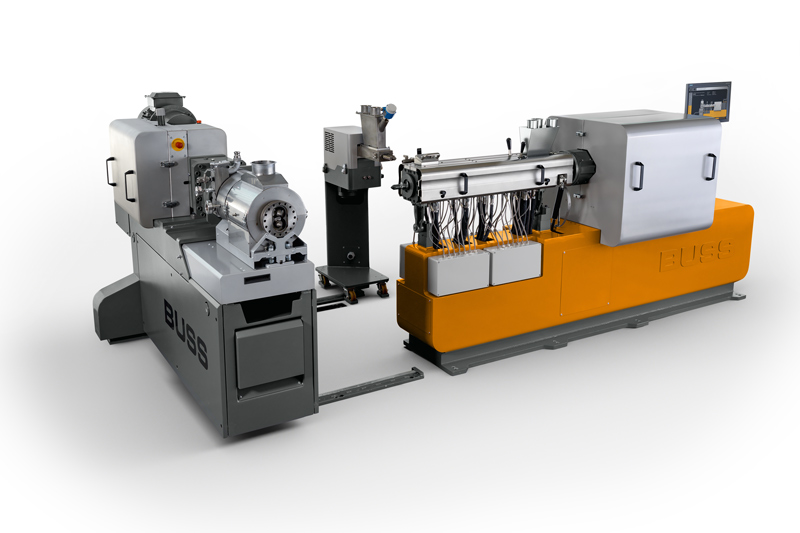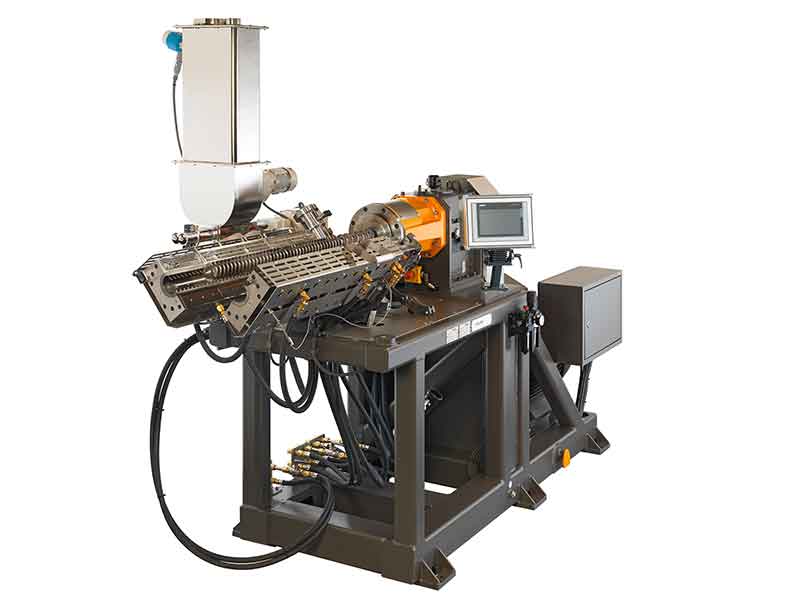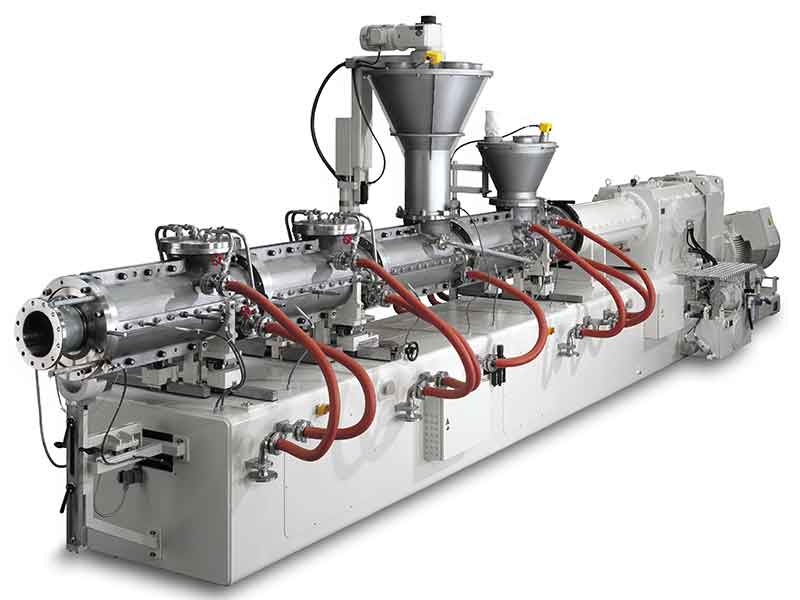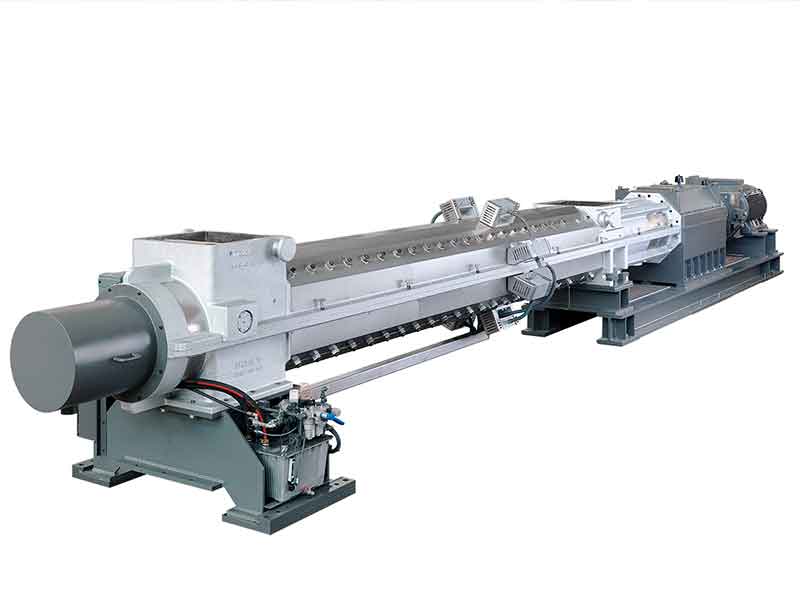BUSS Kneader Technology
BUSS Kneader systems, thanks to their unique operating principle and various modularly combinable versions, are well proven as first-class products in all kinds of industrial applications with excellent references worldwide. Thanks to this extremely wide application range covering pasty, thermoplastic and thermosetting products as well as elastomers, BUSS Kneader systems have a very successful track record in processing plastics, chemical products, powder coatings and toners, pharmaceutical products, caoutchouc, adhesives, anode paste and foodstuffs. Learn more about the BUSS Kneader Technology in this pdf.
These polyvalent systems are ideal for numerous processes:
COMPEO
The polymer industry’s innovation and earnings potential lies in the production of extremely high quality compounds. End products should be reinforced, scratch-resistant, flame-retardant, weather-resistant and at the same time resource-saving. This requires a compounder which easily and thoroughly mixes in significant amounts of additives. Meet COMPEO, the new state-of-the-art compounder delivering more diversity in its application, greater flexibility in process engineering, and increased value added in compound manufacturing.
PCS Compounder for Powder Coatings
The extended BUSS Kneader series PCS sets benchmarks for profitability, availability and user-friendly handling. Whilst it retains the proven operating principle of the BUSS Kneader the process section in particular has undergone distinct modification.
The Buss Kneader PCS 46 is a versatile, compact small-scale compounding extruder for enhanced R&D work and pilot production campaigns. Its peer, the BUSS Laboratory Kneader PCS 30, is a versatile, compact small-scale compounding extruder for research and development, colour matching and customer sampling.
LR Compounder for Foodstuffs
The first Buss Kneader for food processing was delivered in 1948 to a chocolate manufacturer. Gentle working, efficient self-cleaning and easy accessibility to the process zone, typical of these machines, have always been indispensable requirements in this field.
Today, Buss Kneaders are used in the food industry for compounding chocolate and croquant doughs, producing sugar comprimates and soft candies, as well as for the preparation of chewing gum base, chewing gum and bubble gum. Buss LR Kneaders for the food industry have a larger free volume (Do / Di = 1.81) than those used in the plastics industry, a smaller diameter/stroke ratio (Do / H = 4.0), and a lower shear rate.
KX Compounder for Anode Paste
For more than 60 years the Buss Kneader series KE and CP have been the benchmark for cost-effective compounding of anode paste. We continue the tradition with genuine KX technology. Safe. Efficient. Proven.
New BUSS Kneader Series KX for anode pastes: In 2012, ten years after the successful introduction of 4-flighted screw technology in plastics compounding – thereby doubling output rates and setting new benchmarks in terms of mixing efficiency – Buss AG undertook to adapt and enhance the proven solver-based math model-ling tools for anode paste mixing.
Operating principle of the BUSS Kneader
The excellent mixing capabilities of Buss Kneaders can be attributed to the unique operating principle which features simultaneous rotation and axial oscillation of the mixing and kneading screw shaft.
The oscillating screw shaft ensures intensive material exchange in an axial direction by multiple splitting, folding and reorientation of the product.
This results in an excellent distributive mixing effect and optimal distribution of the raw materials. Buss Kneader technology is particularly effective when liquid components have to be incorporated or high degree of fillers need to be added.





